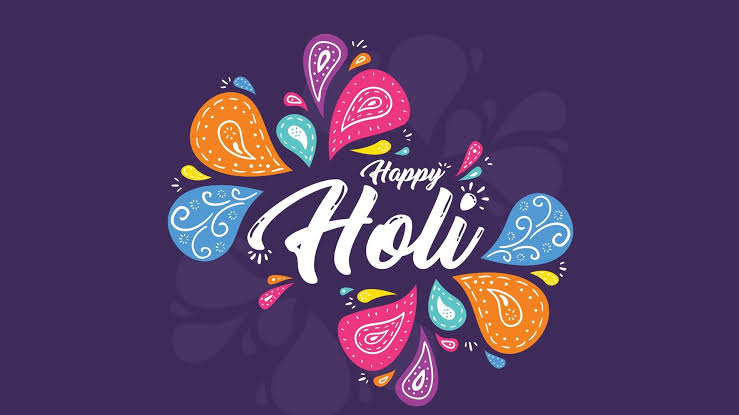“Dive into the vibrant tapestry of Holi, India’s Festival of Colors, in our comprehensive blog. Discover its historical roots, traditional rituals, and contemporary celebrations, all while exploring the festival’s profound significance in fostering unity and social harmony.”
Introduction:
In the vast canvas of Indian culture, one festival splashes the scene with an explosion of colors, joy, and camaraderie – Holi. Celebrated across the length and breadth of India and by Indians worldwide, Holi transcends borders and brings people together in a riot of hues and happiness. This vibrant festival, also known as the Festival of Colors, holds deep cultural, religious, and social significance, marking the arrival of spring and the triumph of good over evil. Let’s delve into the kaleidoscope of Holi, exploring its origins, traditions, and contemporary celebrations.
Historical and Mythological Roots:
The origins of Holi can be traced back to ancient Hindu mythology, with tales steeped in symbolism and allegory. One of the most popular legends associated with Holi is the tale of Prahlada and Holika. Prahlada, a devout follower of Lord Vishnu, was saved from the clutches of his tyrant father, Hiranyakashipu, by divine intervention. Holika, the demoness, was burned to ashes while attempting to kill Prahlada. This legend signifies the victory of good over evil and the power of faith.
Another legend linked to Holi is the divine love story of Radha and Krishna. According to folklore, Lord Krishna, the epitome of mischievous charm, playfully applied colors on Radha and her companions, sparking the tradition of playing with colors during Holi. The playful antics of Krishna and Radha symbolize the universal themes of love, joy, and togetherness.
Traditional Rituals and Customs:
Holi is a multi-faceted festival encompassing various rituals and customs that vary across different regions of India. The festivities typically kick off with the lighting of bonfires on the eve of Holi, known as Holika Dahan or Choti Holi. Communities gather around the bonfire, singing and dancing, while effigies of Holika are burnt, symbolizing the triumph of good over evil.
The main event of Holi unfolds on the following day, known as Rangwali Holi or Dhulandi. This is when the streets come alive with a kaleidoscope of colors as people smear each other with gulal (colored powder) and splash water balloons and colored water. The air is filled with laughter, music, and the aroma of traditional delicacies as people exchange greetings and sweets.
Bhang, a traditional concoction made from cannabis, milk, and spices, is also consumed during Holi in some regions, adding an extra element of merriment to the celebrations. However, its consumption is regulated due to its intoxicating effects.
Social Harmony and Unity:
One of the most beautiful aspects of Holi is its ability to dissolve social barriers and foster a sense of unity and inclusivity. During Holi, people of all ages, backgrounds, and social status come together to partake in the festivities, transcending differences and embracing the spirit of brotherhood and camaraderie.
The festival serves as a reminder of the importance of forgiveness and reconciliation, as people bury old grievances and start afresh with renewed bonds of friendship and goodwill. In many communities, Holi is also an occasion to bridge divides and mend broken relationships, with individuals extending olive branches and seeking forgiveness from those they may have wronged.
Contemporary Celebrations:
While Holi retains its traditional charm, contemporary celebrations have evolved to incorporate modern elements such as music festivals, themed parties, and cultural events. Major cities in India and around the world host grand Holi gatherings, attracting both locals and tourists alike.
In recent years, eco-friendly initiatives have gained traction, promoting the use of natural and organic colors to minimize environmental impact. These eco-conscious celebrations emphasize sustainability and responsible consumption, encouraging participants to embrace green practices while enjoying the festivities.
Furthermore, Holi has transcended cultural boundaries and gained popularity in multicultural societies, where people from diverse backgrounds come together to experience the vibrancy of Indian culture. From color runs to community picnics, Holi has become a global phenomenon, spreading joy and happiness across continents.
Conclusion:
Holi, with its kaleidoscope of colors and myriad traditions, is more than just a festival; it’s a celebration of life, love, and unity. Rooted in ancient mythology yet evolving with the times, Holi continues to captivate hearts and minds, serving as a vibrant expression of India’s rich cultural tapestry.
- As we immerse ourselves in the festivities of Holi, let us embrace the spirit of togetherness and compassion, spreading joy and goodwill wherever we go. May the colors of Holi paint our lives with happiness, prosperity, and boundless love, uniting us in a tapestry of peace and harmony.
Disclaimer:
The views and opinions expressed in this blog are those of the author and do not necessarily reflect the official policy or position of any organization. The information provided is accurate and true to the best of our knowledge, but there may be omissions, errors, or mistakes. The content is provided for informational purposes only and should not be construed as professional or expert advice. Readers are encouraged to consult with appropriate professionals for specific advice tailored to their individual circumstances.

